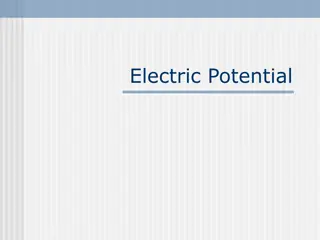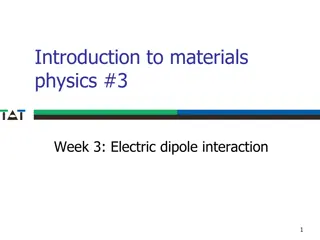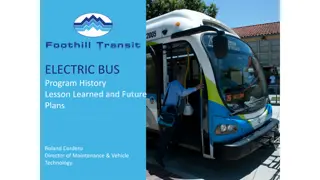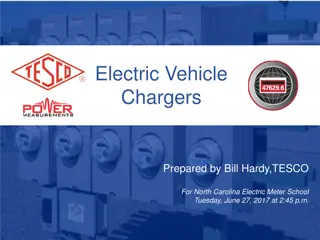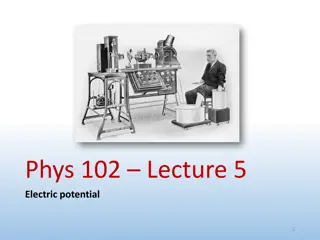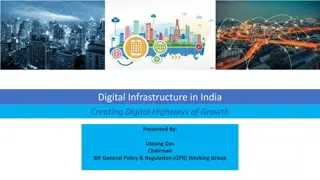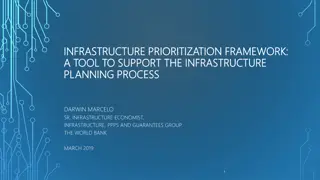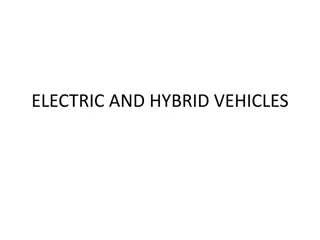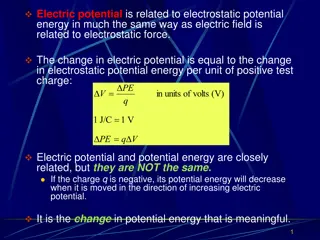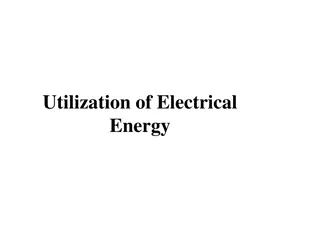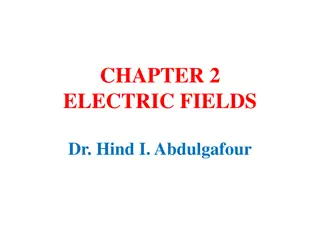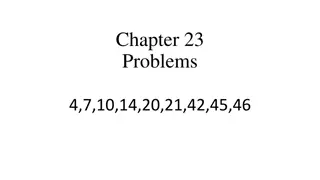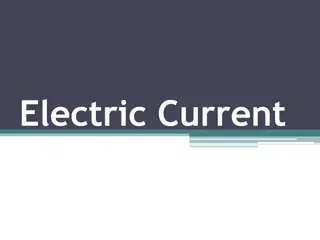Legal and Regulatory Challenges in Multi-Purpose Electric Infrastructure
The use of multi-purpose electric infrastructure presents legal and regulatory challenges in connecting the energy and public transport sectors. Uncertainties in current energy laws, complex requirements, and exposure to multiple taxation pose risks. This webinar explores interactions between public transport grids, energy storage, regenerative braking, and policy recommendations.
Download Presentation

Please find below an Image/Link to download the presentation.
The content on the website is provided AS IS for your information and personal use only. It may not be sold, licensed, or shared on other websites without obtaining consent from the author. Download presentation by click this link. If you encounter any issues during the download, it is possible that the publisher has removed the file from their server.
E N D
Presentation Transcript
Legal and regulatory challenges in the use of multi- purpose electric infrastructure 3rd ELIPTIC webinar 9 April 2018 Hartwig von Bredow 1
Overview I. II. III. New market roles and their legal implications IV. Energy storage and regenerative braking V. Policy Recommendations Introduction Opening up the black box 2
Overview I. II. III. New market roles and their legal implications IV. Energy storage and regenerative braking V. Policy Recommendations Introduction Opening up the black box 3
Introduction I PT grid is used for multiple purposes Rail-bound public transport E-mobility PT Company uses battery operated electric busses PT Company or third parties install public charging stations Energy storage (battery storage and flywheel storage) Electricity recovered by regenerative braking is fed into the PT grid Interactions between PT Grid and public electricity grid 4
Introduction II Use of multipurpose electric infrastructure means to connect the energy sector and the public transport sector It seams unclear if current energy law is suitable to properly rule out the interface between these two sectors Legal uncertainties & risks Complex and sometimes excessive requirements (reporting, measurement, energy regulation) exposure to multiple taxation 5
Overview I. II. Opening up the black box III. Energy storage and regenerative braking IV. Policy Recommendations Introduction 6
Current practice: PT grid as black box Assumption: PT operator is final consumer of electricity 7
future e-mobility requirements there is no blackbox anymore Further consumption (tram stations, escalators, etc.) 9
Legal questions and challenges Is there a suitable legal framework for energy storage? Recovery and use of brake energy? Charging e-busses and other electric vehicles with electricity taken from the PT Grid? Selling of electricity to third parties? Feeding recovered brake energy and energy taken out of storage facilities into the public electricity grid? New challenges: How can PT operator distinct the different processes of energy consumption and energy generation? Set up of a coherent metering concept Distinction between discounted electricity consumption and non- discounted energy consumption How can PT operator avoid multiple taxation and levies? New market role for PT operators: 1. energy utility and 2. operator of a general supply network (that may underly regulation and supervision) Interactions between PT grid and public electricity network 10
Overview I. II. III. New market roles and their legal implications IV. Energy storage and regenerative braking V. Policy Recommendations Introduction Opening up the black box 11
New market role: operator of a public distribution network Current legal status of PT grids seems unclear customer system for the company's own supply? untouched by energy regulation If PT grid becomes a public distribution network, energy regulation applies Obligations towards other stakeholders (e.g. granting of grid access, transparency, no discrimination) Network charges Reporting obligations And so on... 12
New market role: electricity supplier Obligation to pay EEG levy Compulsory registration at the network operator Electricity tax: Compulsory registration at the main customs office Further regulations apply to suppliers concerning electricity labeling, accounting, contracts, etc. Electricity fed into the public electricity network Balancing Grid services Power purchase agreement / exchange authorization 13
Overview I. II. III. New market roles and their legal implications IV. Energy storage and regenerative braking V. Policy Recommendations Introduction Opening up the black box 14
Challenge: regenerative braking Brake energy recovery Trams generate electricity by recuperation / brake energy recovery Recovered electricity is either used in the tram (heat) or gets fed into the PT grid (and then consumed by other trams) Legal questions Do trams classify as electricity-generating units? If so, what legal stipulations apply to the electricity generated by recuperation? (self supply, EEG levy, multiple taxation)? Can trams be considered kinetic storage facilities in order to apply Section 61k EEG 2017 and avoid multiple exposure to EEG levy? If so, how does this work (measurement concept, accounting, conversion losses)? 15
Intoducing: EEG levy for the consumption of energy 2018: 6.792 Cent per kWh General principle: 100 percent of EEG levy for each kWh of electricity consumed within Germany Applies for any energy comsumption, even for the consumption of energy that is not taken from the electricity grid Some exemptions and limitations in case of self-supply, no exemptions for delivery Limitation of EEG levy for railways Only applies to electricity that was consumed directly for the railway transport operation Energy consumption of at least 2 GWh Limitation to 20 per cent Two main challenges: Avoid multiple exposure to EEG levy Distinguish discounted from non-discounted energy consumption 16
EEG levy for 2.000 or for 3.500 kWh? 1.000 kWh PT Grid 2.000 kWh Escalators etc. 250 kWh 250 kWh 250 kWh 17
Overview I. II. III. New market roles and their legal implications IV. Energy storage and regenerative braking V. Policy Recommendations Introduction Opening up the black box 18
Policy recommendations for multi-purpose electric PT infrastructure Need for a clear framework that regulates the role of public transport operators working on the intersection of mobility and energy: Clarity about requirements PT operators should not face risk to lose public subsidies New e-mobility related technologies and applications need to be covered by energy law (energy storage, recuperation, etc.) without excessive measurement requirements Reduce complexity of legal requirements 19
Thank you very much for your attention! Dr. Hartwig von Bredow Rechtsanwalt von Bredow Valentin Herz Partnerschaft von Rechtsanw lten mbB Littenstra e 105 10179 Berlin T: +49 30 8092482-20 F: +49 30 8092482-30 vonbredow@vbvh.de www.vonbredow-valentin-herz.de 20





